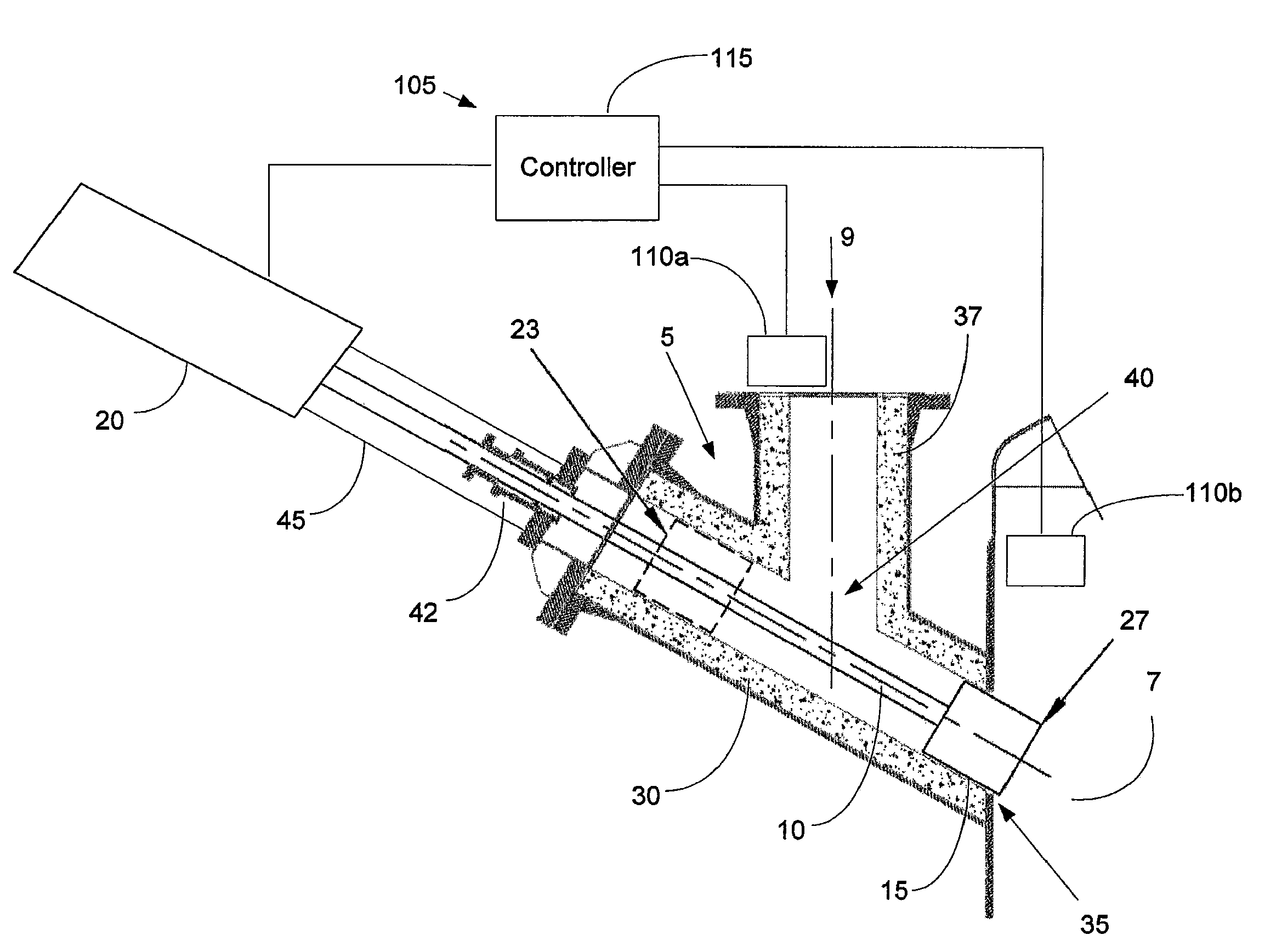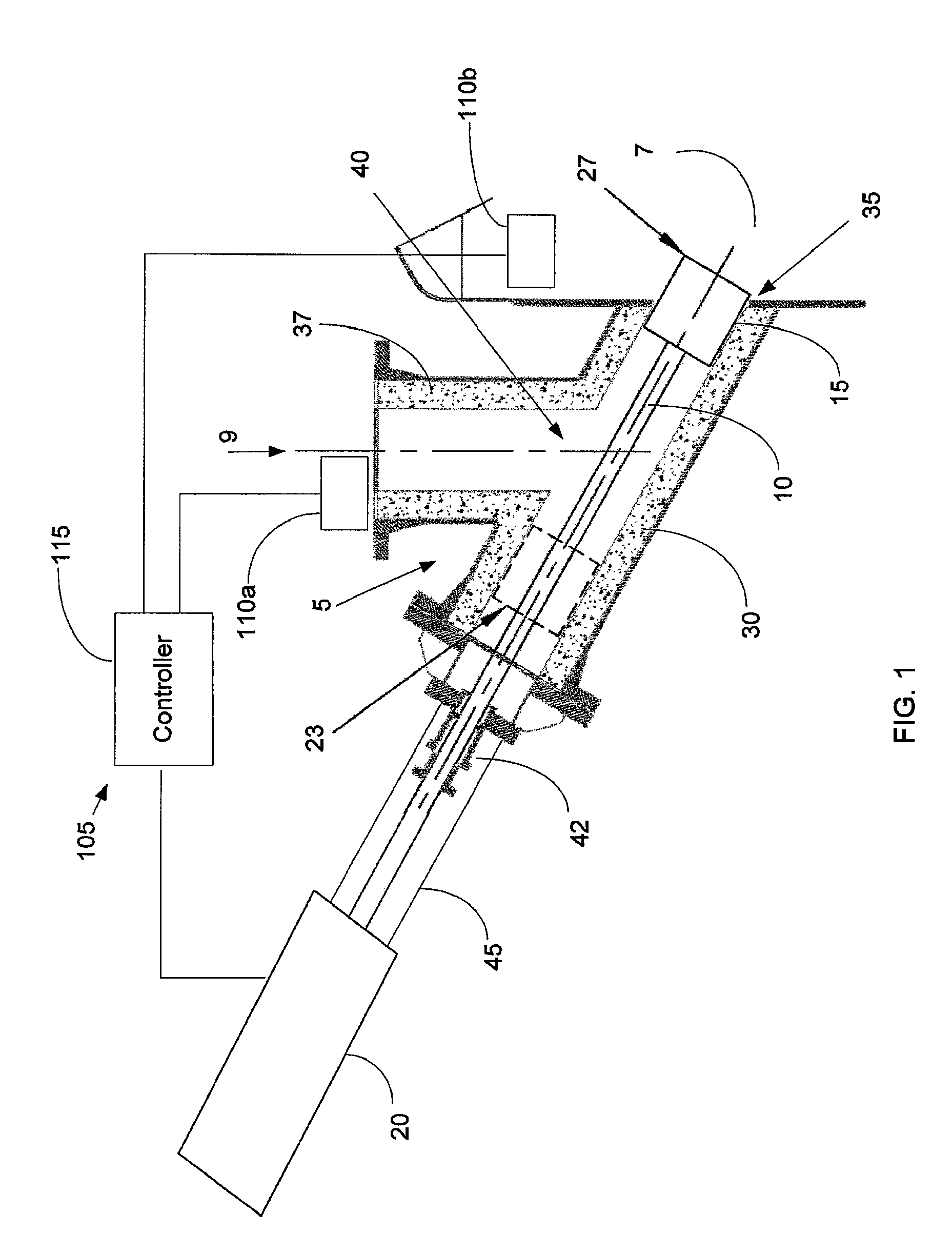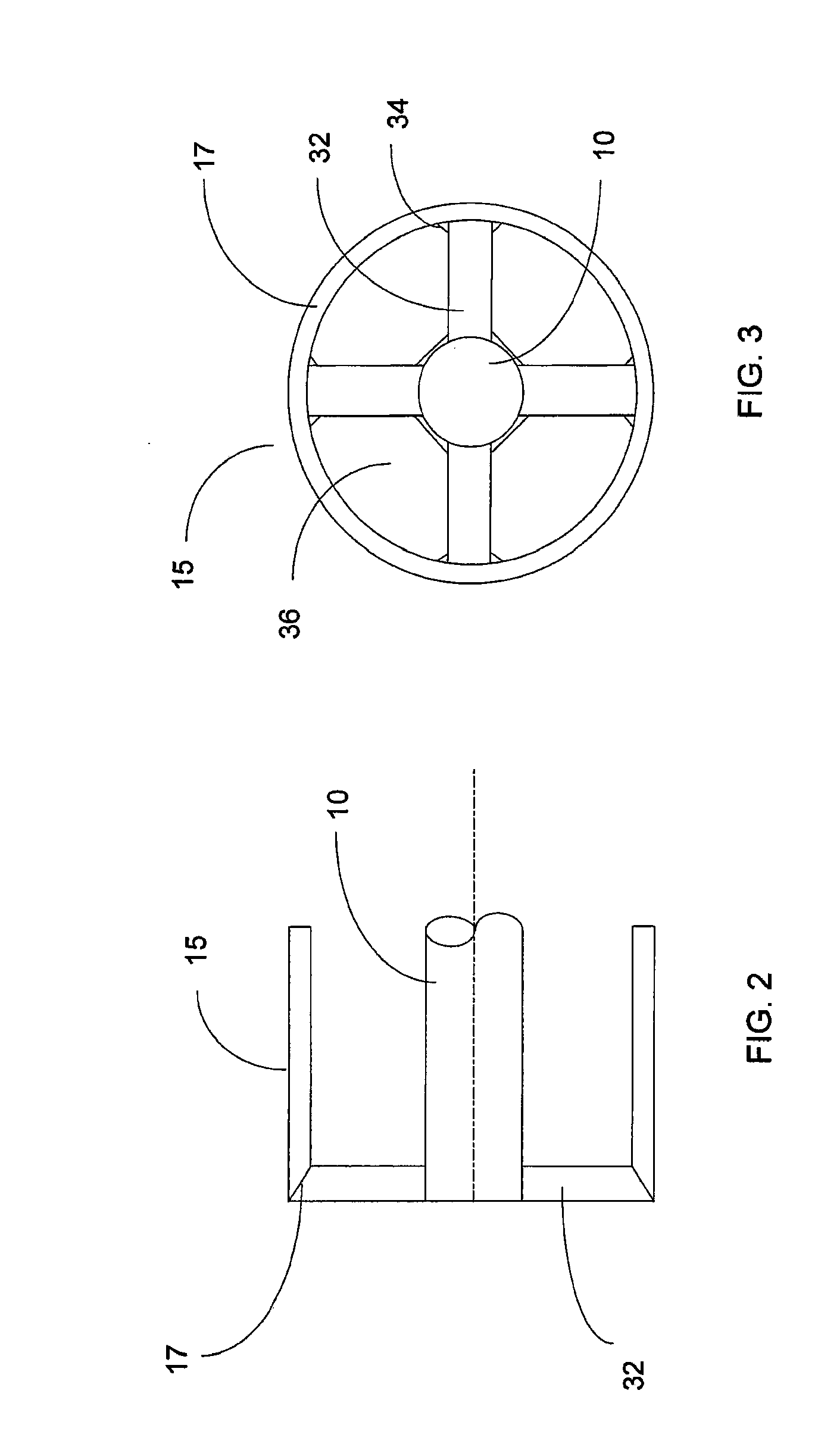Mitigation of deposits and secondary reactions in thermal conversion processes
a thermal conversion and secondary reaction technology, applied in mechanical equipment, lighting and heating equipment, liquid cleaning, etc., can solve the problems of reducing the yield of two-phase tar-aqueous mixtures, reducing the efficiency of thermal conversion processes, and reducing the number of secondary thermal reactions. , to achieve the effect of reducing cumulative deposition and unwanted secondary thermal reactions
- Summary
- Abstract
- Description
- Claims
- Application Information
AI Technical Summary
Benefits of technology
Problems solved by technology
Method used
Image
Examples
Embodiment Construction
[0022]FIG. 1 shows a mechanical reamer according to an exemplary embodiment of the present invention. In this exemplary embodiment, the reamer is configured to clear material build up in a pipeline 5 used for transporting a hot vapor stream to a condensing column or chamber 7 in a pyrolysis process. Details of an exemplary pyrolysis process in which the reamer can be used are given in co-pending application Ser. No. 11 / 943,329, titled “Rapid Thermal Conversion of Biomass,” filed on Nov. 20, 2007, the specification of which is incorporated herein by reference.
[0023]The hot vapor stream flows through the pipeline 5 in the direction 9, and enters the condensing camber 7 where the hot vapor stream is quenched with a cool liquid to condense the hot vapor into a liquid product. A hot-cold interface zone forms around the interface between the pipeline 5 and the condensing camber 7. Due to the hot-cold interface zone, deposition of solid material (not shown) in the pipeline 5 occurs in the ...
PUM
 Login to View More
Login to View More Abstract
Description
Claims
Application Information
 Login to View More
Login to View More - R&D
- Intellectual Property
- Life Sciences
- Materials
- Tech Scout
- Unparalleled Data Quality
- Higher Quality Content
- 60% Fewer Hallucinations
Browse by: Latest US Patents, China's latest patents, Technical Efficacy Thesaurus, Application Domain, Technology Topic, Popular Technical Reports.
© 2025 PatSnap. All rights reserved.Legal|Privacy policy|Modern Slavery Act Transparency Statement|Sitemap|About US| Contact US: help@patsnap.com



